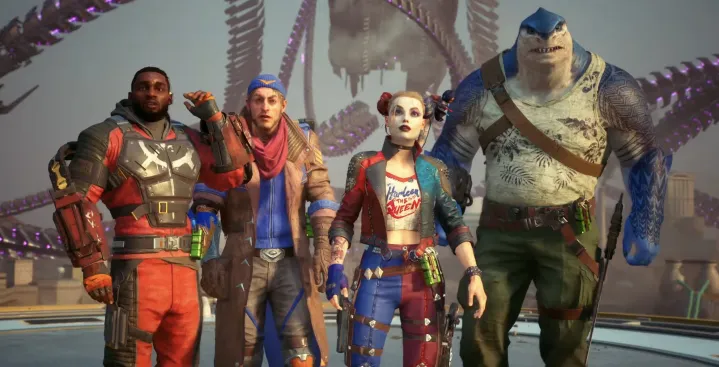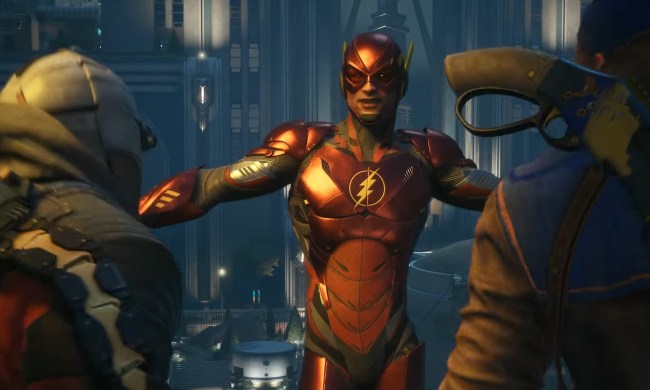
Frank Miller set the standards for most modern Batman stories with The Dark Knight Returns and Batman: Year One in the 1980s. That same legendary creator thoroughly disappointed with All-Star Batman & Robin in the 2000s due to subpar writing and odd character moments. The latter might have been less infamous if the Batman stories that came before from Miller weren’t so influential, but that’s not the universe we’re living in. Modern comic book universes like DC and Marvel have a problem dealing with their own legacy. With so many decades of iconic characters and stories, it can be tough not to introduce new people to the universe but to live up to the high mark of older books. That makes it harder for great new stories to stand out and exacerbates criticism of newer works.
With Rocksteady Studios’ Suicide Squad: Kill the Justice League, that problem has finally hit comic book video games. I’ve spent over eight hours with Suicide Squad: Kill the Justice League so far in both single-player and multiplayer after receiving code the day after its early access launch. My time with the game has yielded mixed results. It’s not an absolute disaster like Redfall of The Day Before, but it’s disappointing in the context of Rocksteady’s legacy.
Suicide Squad: Kill the Justice League makes many of the mistakes one would expect from a previously single-player studio’s first foray into multiplayer. It doesn’t play much to Rocksteady’s previous strengths or the best parts of the Batman: Arkham trilogy. Outside of combat, a lot fails to impress. There’s a fun third-person shooter at its core, but eight hours in, Suicide Squad: Kill the Justice League feels like a far cry from this studio’s best — and that might make it seem worse than it really is.
What are we?

Where the Batman: Arkham games were single-player action games, Suicide Squad: Kill the Justice League blows things out into a cooperative multiplayer experience that supports up to four players. Unfortunately, it makes all the same mistakes that games like Marvel’s Avengers did, once again highlighting how hard it can be for a studio to get a multiplayer game right the first time around.
Its third-person combat is fast and fluid, and I was able to get the hang of it quickly. Although Harley Quinn, Deadshot, King Shark, and Captain Boomerang do all unfortunately play quite similarly, they stand out in how they traverse the world. My favorites so far are Deadshot, because I can fly around with his jetpack, and Harley Quinn, because she delightfully swings around like Spider-Man using a Bat Drone.
When I’m purely focusing on moving around and shooting all the aggressive purple things, there is quite a bit of enjoyment to be had, especially in multiplayer. Unfortunately, that’s let down by poor mission design that feels like a step back for the studio. Almost every mission Batman went on in the Arkham games felt deftly hand-crafted and fine-tuned to create the most immersive Batman experience. Here, the objectives are much more tedious and basic, falling into genre clichés like defending or attacking certain points of interest.
Even eight hours in, I’m already bored by the mission design. That doesn’t bold well for the back half of this game’s narrative and the endgame content. It also doesn’t help that players are dragged through almost a minute of menus after completing any mission, ruining the pacing of the experience. Hopefully, the boss fights against Justice League members and post-game missions are a lot more engaging. I’ve also yet to fully learn the intricacies of the loot and augment systems, as I’ve only recently unlocked every vendor.

I also don’t know how to feel about Suicide Squad: Kill the Justice League’s story yet, either. I appreciate that Rocksteady continues the Arkham games’ bold storytelling here, taking a big swing by making the Justice League evil and showing them to do deplorable things. Kevin Conroy also delightfully hams up every voice line while playing an evil version of Batman in what may be his final performance as the character. I’ve yet to meet Superman or Brainiac, so the main threat oddly still feels esoteric even though I’m already several chapters in.
It seems like Suicide Squad: Kill the Justice League’s story is about the failure of authority, whether with the corrupted Justice League or the rashness of Amanda Waller. That’s why it feels ironic that so far, the game feels like it was made on a corporate mandate that didn’t take this studio or universe’s previous strengths into account. Success breeds legacy and expectation, and Rocksteady failed to handle either properly. This game was going to be controversial no matter what, so it’s disappointing to see a lauded studio play right into the expected criticisms.
Suicide Squad: Kill the Justice League is defying Arkham’s legacy but is struggling to justify having done that so far. Right now, this game is shaping up to be more like Rocksteady’s All-Star Batman & Robin rather than its Batman: Year One.



